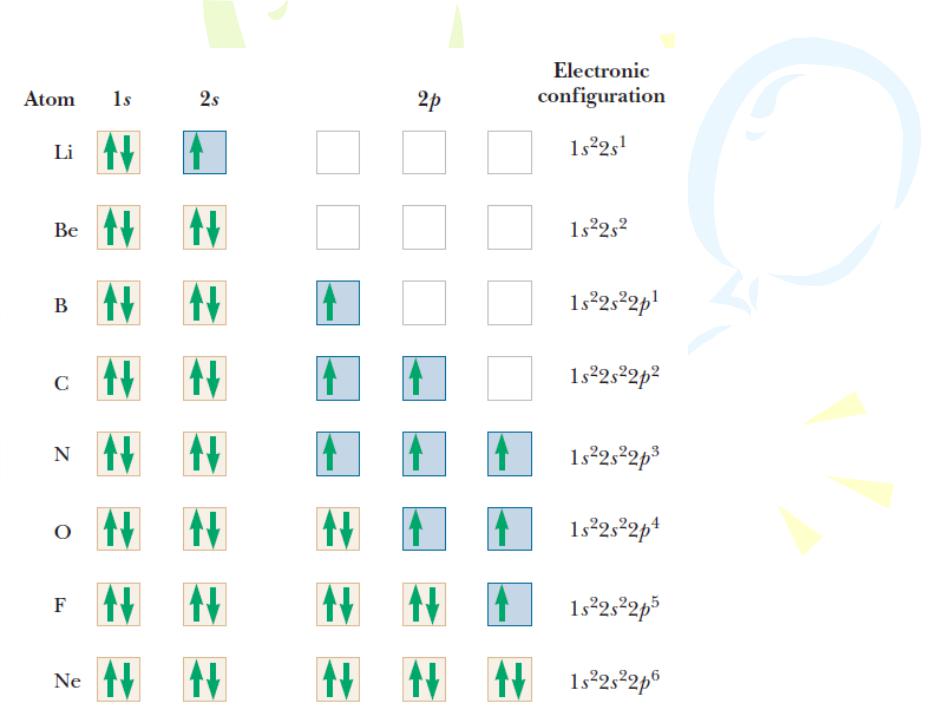
- •Course of lectures «Contemporary Physics: Part2»
- •Physical Interpretation of the Quantum Numbers
- •Physical Interpretation of the Quantum Numbers
- •Physical Interpretation of the Quantum Numbers
- •Physical Interpretation of the Quantum Numbers
- •Physical Interpretation of the Quantum Numbers
- •Physical Interpretation of the Quantum Numbers
- •Physical Interpretation of the Quantum Numbers
- •Physical Interpretation of the Quantum Numbers
- •The Exclusion Principle and the Periodic Table
- •The Exclusion Principle and the Periodic Table
- •The Exclusion Principle and the Periodic Table
- •The Exclusion Principle and the Periodic Table
- •The Exclusion Principle and the Periodic Table
- •More on Atomic Spectra: Visible and X-Ray
- •More on Atomic Spectra: Visible and X-Ray
- •More on Atomic Spectra: Visible and X-Ray
- •More on Atomic Spectra: Visible and X-Ray
- •More on Atomic Spectra: Visible and X-Ray
- •More on Atomic Spectra: Visible and X-Ray
- •More on Atomic Spectra: Visible and X-Ray
- •Spontaneous and Stimulated Transitions
- •Spontaneous and Stimulated Transitions
- •Spontaneous and Stimulated Transitions
- •Lasers
- •Lasers
- •Lasers
- •Lasers
- •Lasers
- •Lasers
- •Lasers
- •Lasers

The Exclusion Principle and the Periodic Table
The filling of electronic states must obey both the exclusion principle and Hund’s rule

The Exclusion Principle and the Periodic Table
Hund’s rule, states that
when an atom has orbitals of equal energy, the order in which they are filled by electrons is such that a maximum number of electrons have unpaired spins.

The Exclusion Principle and the Periodic Table
The periodic table

The Exclusion Principle and the Periodic Table
Ionization energy of the elements versus atomic number

More on Atomic Spectra: Visible and X-Ray
Transitions for which l does not change are very unlikely to occur and are called forbidden transitions. (Such transitions actually can occur, but their probability is very low relative to the probability of “allowed” transitions.) The various diagonal lines represent allowed transitions between stationary states. Whenever an atom makes a transition from a higher energy state to a lower one, a photon of light is emitted.
unlikely to occur and are called forbidden transitions. (Such transitions actually can occur, but their probability is very low relative to the probability of “allowed” transitions.) The various diagonal lines represent allowed transitions between stationary states. Whenever an atom makes a transition from a higher energy state to a lower one, a photon of light is emitted.

More on Atomic Spectra: Visible and X-Ray
The selection rules for the allowed transitions are
the allowed energies for one-electron atoms and ions, such as hydrogen and He+ are 
This equation was developed from the Bohr theory, but it serves as a good first approximation in quantum theory as well. 

More on Atomic Spectra: Visible and X-Ray
X-Ray Spectra
X-rays are emitted when high-energy electrons or any other charged particles bombard a metal target. The x-ray spectrum typically consists of a broad continuous band containing a series of sharp lines. 
X-ray radiation with its origin in the slowing down of electrons is called bremsstrahlung, the German word for “braking radiation.”
The discrete lines called characteristic x-rays.

More on Atomic Spectra: Visible and X-Ray
X-Ray Spectra
Figure shows a machine that uses a linear accelerator to accelerate electrons up to 18 MeV and smash them into a tungsten target. The result is a beam of photons, up to a maximum energy of 18 MeV, which is actually in the gamma-ray range. This radiation is directed at the tumor in the patient.

More on Atomic Spectra: Visible and X-Ray
X-Ray Spectra
Other characteristic x-ray lines are formed when electrons drop from upper levels to vacancies other than those in the K shell. For example, L lines are produced when vacancies in the L shell are filled by electrons dropping from higher shells. An Lα line is produced as an electron
drops from the M shell to the L shell, and an Lβ line is produced
by a transition from the N shell to the L shell.

More on Atomic Spectra: Visible and X-Ray
X-Ray Spectra
We can now estimate the energy associated with an electron in the L shell: 
After the atom makes the transition, there are two electrons in the K shell. We can approximate the energy associated with one of these electrons as that of a one-electron atom. (In reality, the nuclear charge is reduced somewhat by the negative charge of the other electron, but let’s ignore this effect.) Therefore,
